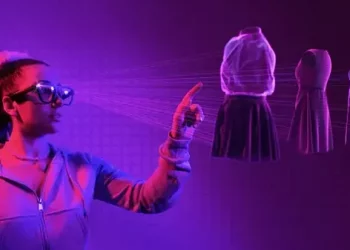The metaverse is a rapidly evolving digital universe where users can interact with each other and immersive environments in real-time. It has captured the imagination of tech enthusiasts, gamers, and businesses alike, as it offers limitless possibilities for creating and exploring new worlds. Building a virtual world within the metaverse requires a blend of creativity, technical knowledge, and an understanding of how these environments can serve the needs of their users. This article provides a step-by-step guide on how to create a virtual world in the metaverse, covering the necessary tools, platforms, and best practices.
Understanding the Metaverse
What is the Metaverse?
The metaverse is a collective virtual shared space, created by the convergence of virtually enhanced physical reality and physically persistent virtual spaces. It includes the sum of all virtual worlds, augmented reality, and the internet. The concept of the metaverse has been around for years, but with advancements in technology, especially in areas like virtual reality (VR) and blockchain, the vision of the metaverse is becoming increasingly tangible.
In the metaverse, users can socialize, play games, attend events, shop, work, and even own and trade digital assets. Each of these activities takes place within different virtual worlds or environments, which are designed and built by developers, companies, or even users themselves.
Why Create a Virtual World in the Metaverse?
Creating a virtual world in the metaverse offers numerous opportunities. For individuals, it can be a platform for artistic expression or social interaction. For businesses, it presents new ways to engage with customers, hold virtual events, or create branded environments. Moreover, virtual worlds can be monetized through the sale of digital goods, real estate, or services, providing a new revenue stream in the digital economy.
Steps to Create a Virtual World in the Metaverse
1. Define Your Vision and Purpose
Before diving into the technical aspects, it’s essential to have a clear vision of what you want to achieve with your virtual world. Ask yourself the following questions:
What is the purpose of your virtual world? Are you creating a social space, a game, a virtual store, or an event venue? Your purpose will guide the design and functionality of your world.
Who is your target audience? Understanding your audience will help you tailor the experience to their needs and preferences.
What type of environment are you creating? Consider the theme, setting, and overall aesthetic of your virtual world. Is it a futuristic city, a fantasy landscape, or a realistic simulation?
Having a clear vision will not only guide your creative process but also help you make informed decisions about the tools and platforms you’ll use.
2. Choose the Right Platform
There are several platforms available for creating virtual worlds in the metaverse, each with its strengths and weaknesses. Some of the most popular platforms include:
Unity and Unreal Engine: These are powerful game engines that offer extensive tools for creating immersive 3D environments. They require some programming knowledge but provide great flexibility in design and functionality.
Decentraland: A blockchain-based platform where users can create, explore, and trade in a virtual world. It’s user-friendly and doesn’t require advanced technical skills, making it accessible for beginners.
Roblox: A platform that allows users to create games and virtual worlds. It has a large community and offers a simple interface for building and scripting.
The Sandbox: Another blockchain-based platform where users can create, own, and monetize their virtual experiences. It’s known for its voxel-style graphics and easy-to-use editor.
When choosing a platform, consider factors such as ease of use, customization options, community support, and monetization potential. If you’re new to virtual world creation, you might start with a more user-friendly platform like Decentraland or The Sandbox before moving on to more complex tools like Unity or Unreal Engine.
3. Learn the Necessary Skills
Creating a virtual world in the metaverse requires a combination of skills, including:
3D Modeling and Design: You’ll need to create or source 3D models for the objects and environments in your virtual world. Tools like Blender, Maya, or 3ds Max are commonly used for 3D modeling.
Programming and Scripting: Depending on the platform, you may need to write code to control the behavior of objects, create interactive elements, or manage the world’s mechanics. Programming languages like C#, JavaScript, or Lua are often used in these environments.
Animation: If your virtual world includes characters or moving objects, you’ll need to animate them. This involves creating keyframes, rigging models, and applying motion capture data.
Sound Design: Sound is a critical element in creating an immersive experience. You’llneed to source or create sound effects, background music, and voiceovers.
User Interface (UI) Design: A well-designed UI helps users navigate your virtual world and access its features. This includes menus, buttons, and other interactive elements.
If you’re not familiar with these skills, there are many online tutorials, courses, and communities that can help you learn. Alternatively, you can collaborate with other creators or hire professionals to assist with specific aspects of your project.
4. Design Your World
With your vision, platform, and skills in place, it’s time to start designing your virtual world. This involves several steps:
Map Out the Environment
Begin by sketching or mapping out the layout of your virtual world. Consider the following:
Geography: Decide on the landscape and terrain. Will your world have mountains, rivers, forests, or urban areas? What’s the scale of your environment?
Architecture: Plan the structures and buildings in your world. Think about their style, materials, and function. Will they be realistic or fantastical?
Points of Interest: Identify key locations that will attract users, such as meeting spots, event venues, or marketplaces. Ensure that these locations are accessible and visually appealing.
Navigation: Design pathways, roads, or teleportation points that allow users to move around your world easily. Consider how users will interact with the environment and each other.
Create the Environment
Using your chosen platform, start building the 3D environment. This process includes:
Modeling: Create or import 3D models for the landscape, buildings, objects, and characters. Pay attention to detail and ensure that the models are optimized for performance.
Texturing: Apply textures and materials to your models to give them color, detail, and realism. Use tools like Substance Painter or Photoshop to create custom textures.
Lighting: Set up the lighting in your world to create the desired atmosphere. Consider the time of day, weather conditions, and mood. Dynamic lighting can enhance the realism and immersion of your world.
Animation: Animate any moving objects, characters, or environmental effects. This could include character movements, water flows, or weather changes.
Add Interactivity
Interactivity is a key component of an engaging virtual world. Consider adding the following interactive elements:
NPCs (Non-Player Characters): Populate your world with NPCs that users can interact with. These characters can provide information, quests, or companionship.
Games and Challenges: Create mini-games, puzzles, or challenges that users can participate in. This adds an element of fun and keeps users engaged.
Social Features: Enable social interactions, such as chat, voice communication, or collaborative activities. This fosters a sense of community and makes your world more lively.
Commerce: If your world includes a marketplace, set up systems for buying, selling, or trading virtual goods. This could involve in-game currency or blockchain-based assets.
5. Test and Optimize
Before launching your virtual world, it’s important to thoroughly test it to ensure that everything works as intended. This includes:
Bug Testing: Identify and fix any bugs or glitches that could disrupt the user experience. Test the world on different devices and platforms to ensure compatibility.
Performance Optimization: Optimize your world for performance to ensure smooth gameplay and reduce lag. This may involve optimizing 3D models, reducing the number of objects, or adjusting the lighting.
User Feedback: Invite a small group of users to test your world and provide feedback. Use their insights to make improvements and address any issues they encounter.
6. Launch Your Virtual World
Once your virtual world is complete and thoroughly tested, it’s time to launch it to the public. Consider the following steps:
Marketing: Promote your virtual world through social media, online communities, and other channels. Create trailers, screenshots, and other promotional materials to attract users.
Community Building: Encourage users to join and participate in your world. Host events, contests, or challenges to keep the community engaged.
Monetization: If you plan to monetize your virtual world, set up systems for in-world purchases, subscriptions, or advertising. Consider offering premium content or experiences for paying users.
7. Maintain and Update Your World
Creating a virtual world is an ongoing process. To keep your world relevant and engaging, you’ll need to:
Update Content: Regularly add new content, features, or events to keep users coming back. This could include seasonal updates, new quests, or special events.
Moderate the Community: Monitor user interactions and enforce community guidelines to ensure a positive and inclusive environment. Address any issues that arise, such as harassment or cheating.
Gather Feedback: Continuously gather feedback from users to identify areas for improvement. Use this feedback to make updates and enhancements.
Evolve with Technology: Stay informed about the latest developments in the metaverse and virtual reality technology. Incorporate new tools, features, or platforms as they become available to enhance your world.
See also: How to Make a Metaverse Character
Conclusion
Creating a virtual world in the metaverse is an exciting and rewarding endeavor. Whether you’re an individual looking to express your creativity or a business aiming to engage with customers in a new way, the metaverse offers limitless possibilities. By following the steps outlined in this article, you can bring your vision to life and create a virtual world that resonates with users. Remember, the key to success is to start with a clear vision, choose the right platform, and continuously iterate and improve your world based on user feedback. With dedication and creativity, you can build a thriving virtual environment in the ever-expanding metaverse.
Related topics:

















